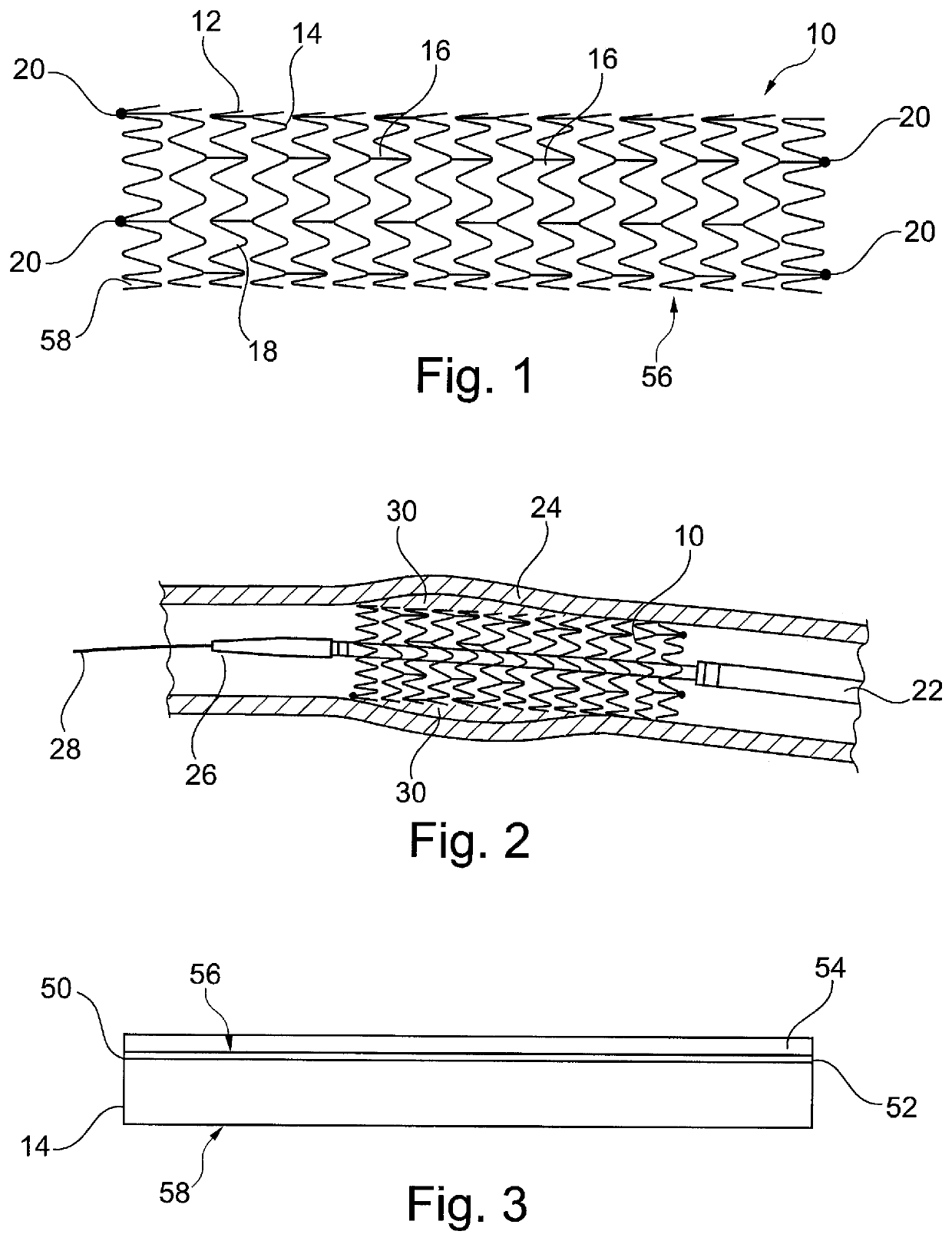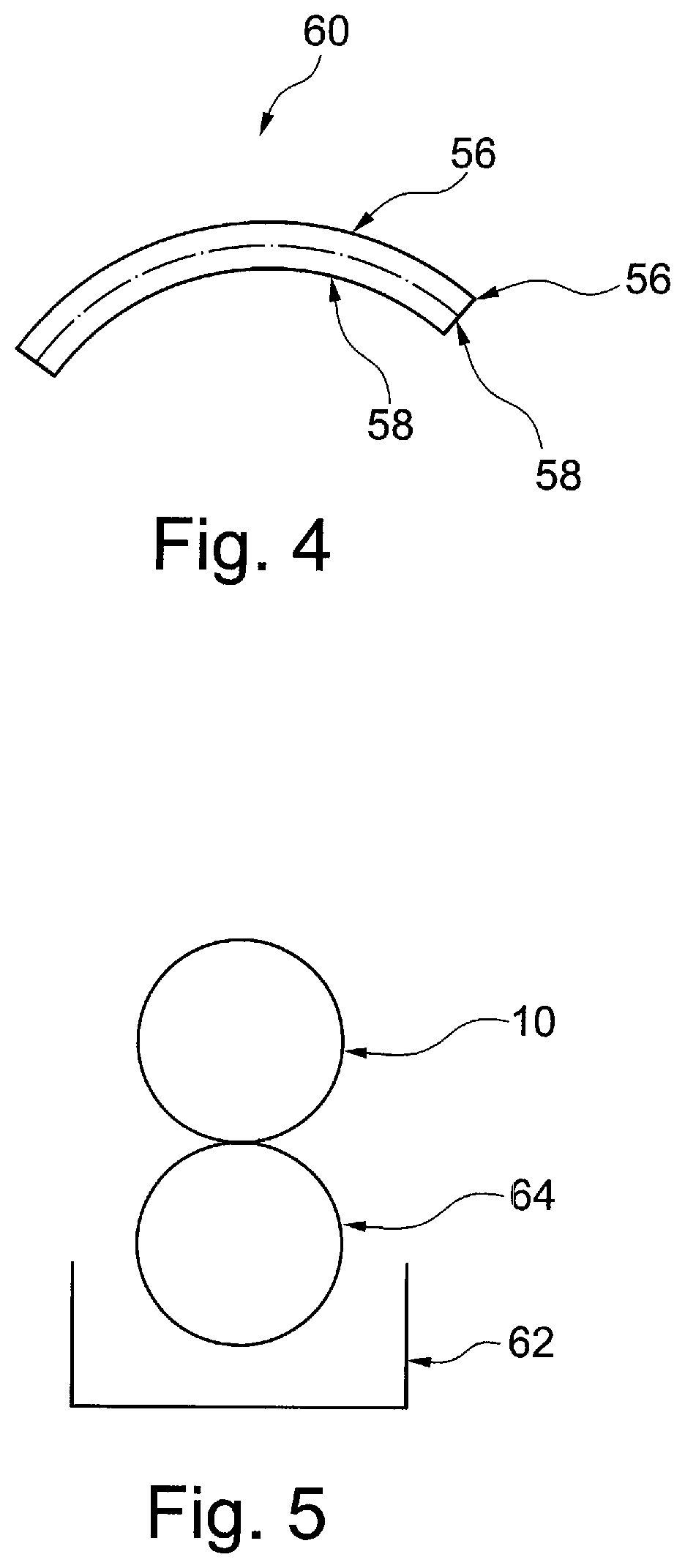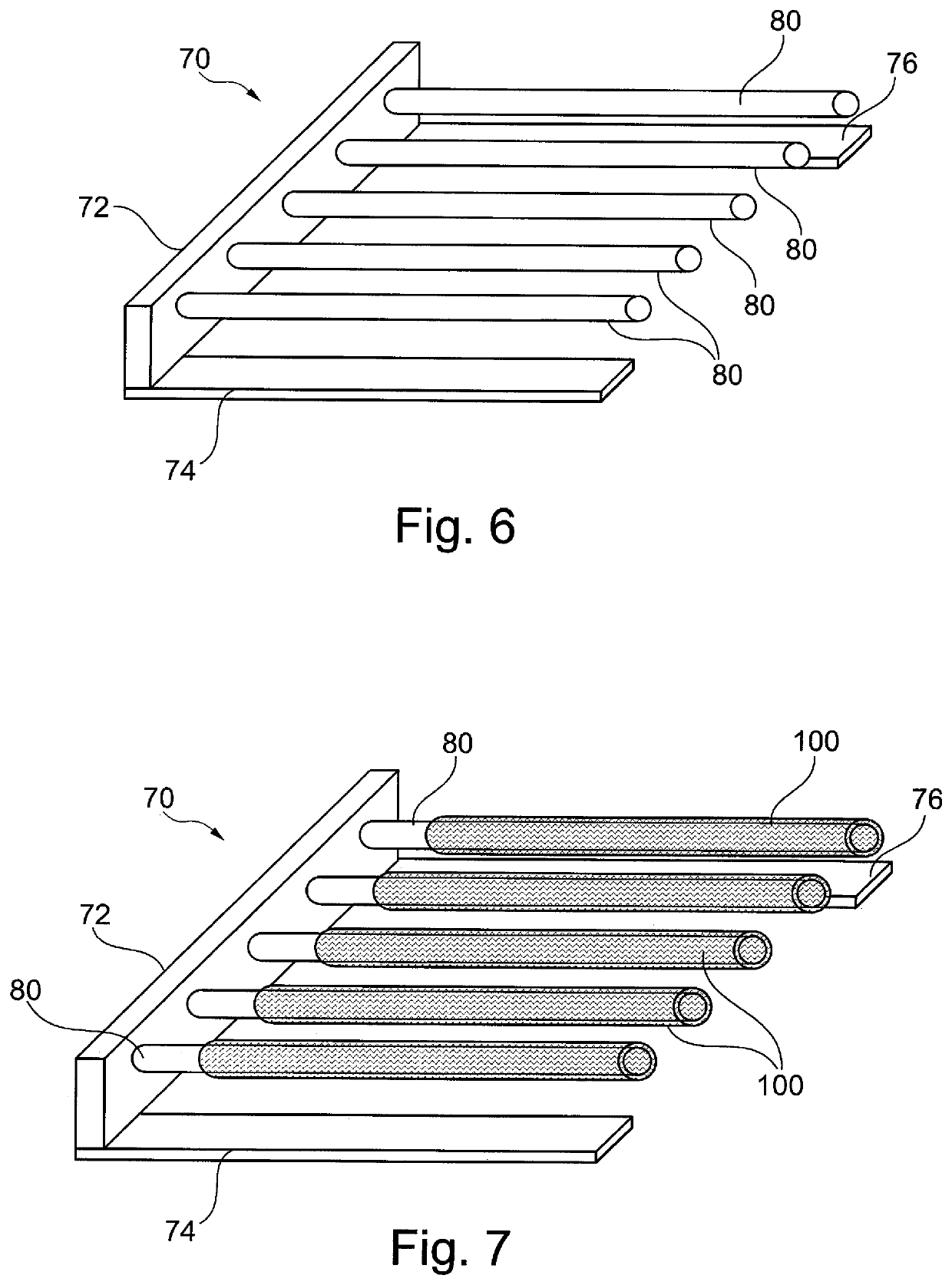Implantable medical device with differentiated luminal and abluminal characteristics
a medical device and luminal technology, applied in the field of implantable medical devices, can solve problems such as exaggerated neointimal proliferative response, and achieve the effect of reducing surface energy
- Summary
- Abstract
- Description
- Claims
- Application Information
AI Technical Summary
Benefits of technology
Problems solved by technology
Method used
Image
Examples
Embodiment Construction
[0053]It is to be understood that the drawings are schematic only and not to scale. Often, only the principal components relevant to the teachings herein are shown in the drawings, for the sake of clarity.
[0054]The embodiments described below focus on a coated stent. It is to be understood, however, that these are examples only and that the teachings herein can be applied to a large range of medical devices, both for temporary placement in a patient and also for long term placement. Other examples include stent grafts, vascular filters and plugs, and so on.
[0055]Referring first to FIG. 1, there is shown an exemplary vascular stent 10 to which the teachings herein can be applied. The stent 10 is generally a tubular structure 12, in this example formed of a plurality of stent rings 14 which extend in series coaxially along the length of the tubular structure 12 and which are coupled to one another by means of tie bars 16, well known in the art. In this example, the stent rings 14 are ...
PUM
| Property | Measurement | Unit |
|---|---|---|
| depth | aaaaa | aaaaa |
| surface energy | aaaaa | aaaaa |
| time release | aaaaa | aaaaa |
Abstract
Description
Claims
Application Information
 Login to View More
Login to View More - R&D
- Intellectual Property
- Life Sciences
- Materials
- Tech Scout
- Unparalleled Data Quality
- Higher Quality Content
- 60% Fewer Hallucinations
Browse by: Latest US Patents, China's latest patents, Technical Efficacy Thesaurus, Application Domain, Technology Topic, Popular Technical Reports.
© 2025 PatSnap. All rights reserved.Legal|Privacy policy|Modern Slavery Act Transparency Statement|Sitemap|About US| Contact US: help@patsnap.com



